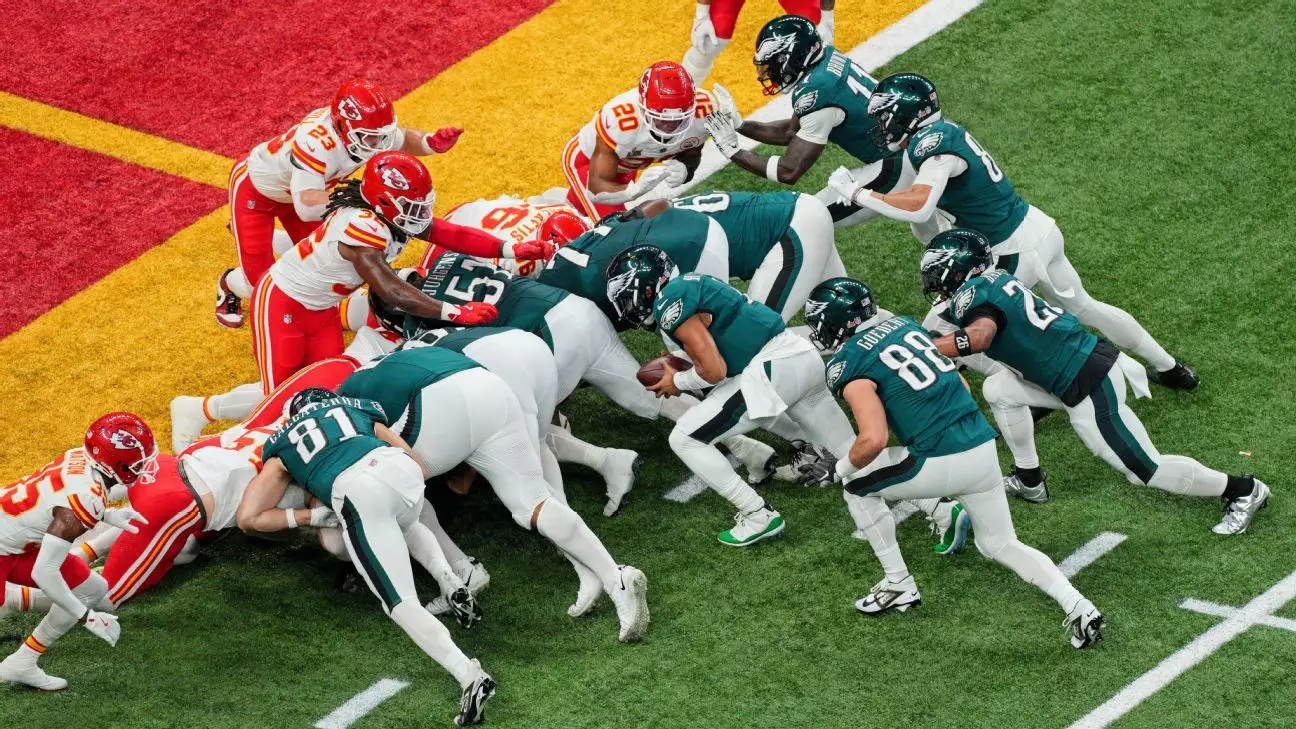The National Football League (NFL) is no stranger to controversy. Most recently, a significant proposal emerged during the scouting combine, aimed at banning the increasingly successful “tush push” quarterback sneak. Troy Vincent, the NFL’s executive vice president of football operations, addressed this during interviews, sparking discussions on the future of this unorthodox play. While Vincent chose not to reveal the team behind this initiative, the implications it holds for the league are profound. If the proposal advances to a vote next month during the spring owners’ meeting in Palm Beach, Florida, the landscape of short-yardage plays in football might undergo a fundamental change.
The Mechanics of the “Tush Push”
To understand the gravity of the proposal, we must first clarify what the “tush push” encompasses. This play, which sees players lining up behind the quarterback to shove him forward into the defensive line, has proven to be strikingly effective. According to data, teams like the Philadelphia Eagles and Buffalo Bills have executed approximately 163 instances of this maneuver over the past three seasons, a number that dwarfs the rest of the league’s attempts. The success rate is another eye-opener; these two teams have enjoyed an astonishing 87% success rate in gaining a touchdown or first down with the play, significantly outperforming the league-wide average of 71%.
This significant disparity raises questions about competitive balance within the league. With only two franchises excelling at this play, other teams might feel compelled to devise their own strategies to counteract its effectiveness or even adopt the play themselves, changing the competitive dynamics for all teams involved.
Despite its effectiveness, the “tush push” has not escaped scrutiny. For several seasons, it has been analyzed by the NFL’s competition committee. Remarkably, no decisive action has been taken thus far—even while discussions on other tackling techniques have seen more immediate responses. Vincent indicated that the proposal has again placed the “tush push” under a spotlight, albeit with reluctance. With remarks like “the Philadelphia Eagles, they just do it better than everybody else,” it is clear that the committee is approaching this proposal with nuanced consideration, recognizing that while some teams exploit this tactic more efficiently, the play itself is not inherently flawed.
This proposal is noteworthy not only for its potential impact but also for the underlying question it raises: Should a single highly successful tactic warrant regulation, or is it simply a part of the ebb and flow of the competitive spirit inherent in sports?
Eagles head coach Nick Sirianni has taken a firm stance in favor of maintaining the play, emphasizing its unique effectiveness for his team while transmitting an appeal to the broader audience that seeks strategic diversity in football. His conviction speaks to a faction of fans and analysts who relish the complexities and varying styles that different teams bring to the field. On the other hand, there are traditionalists who argue that the game should strive for balance, especially if specific plays converge to create unassailable advantages for certain teams.
Furthermore, the broader implications for officiating and game management cannot be overlooked. The “tush push” situation recently manifested at critical game moments, and rulings on it could lead to increased scrutiny of officiating practices. Referees must not only interpret the rules but also enforce these during high-stakes moments of play, bringing additional pressure onto those in charge of game management.
As the NFL moves closer to the potential vote on banning the “tush push,” it finds itself at a crossroads—balancing innovation with tradition while striving to maintain a competitive equilibrium. The proposal’s success or failure could send ripples throughout the league, influencing how teams approach short-yardage situations moving forward. Regardless of the outcome, discussions surrounding this play illustrate a larger narrative about how the NFL adapts and evolves, with a constant pulse on both effective strategies and the integrity of the game itself. In the coming weeks, as stakeholders weigh the merits of banning such a useful play, the future of the NFL could redefine what constitutes fair play and competitive spirit.


Leave a Reply